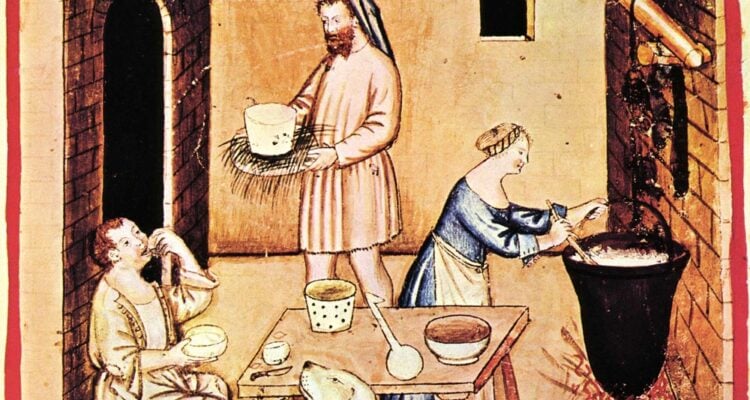We continue to explore European food culture and seek answers to our question—what’s for dinner—during the Middle Ages.
By Robert A. Selig
February/March’s annual issue theme is typically focused on food, about growing grains and vegetables during different time periods in German history although I have traced a variety of food culture topics in other issues (see SIDEBAR for a sampling): fishing or hunting animals to supplement the diet; liquids our ancestors drank and many of which we still drink today; which food staples disappeared due to famine or rationing, and which new foods appeared at specific historical times.
Looking at the food we eat, how we eat it, and indispensable elements of daily life, we present facets of human existence easily overlooked as many historians tend to focus on political and/or military history or investigate the lives of “great” men and women. Last year’s feature concluded that the question: What’s for dinner? had not yet been fully answered, especially about the societal context within which foodstuffs were grown. In medieval society where but a small minority of people did not live in a village community and was not engaged in the mechanics of agriculture—how the production of foodstuffs was collectively organized within and by the village community, the decisions of what was grown and where, when seeding, harvesting, and slaughtering would begin, was of vital importance. What were the yields peasants could hope to reap from their crops and how much could they expect to keep for their own use, to feed their families and animals? And we still need to look at the impact large-scale events, such as the Black Death that swept across Germany and Europe from 1347/48 to 1351 and again in 1361, had on the lives and diets of our ancestors. Once all the seeding, harvesting, and preparing of the meal was done, there remains the question of how these foods were eaten (of bowls and platters, of knives, forks, spoons, or bare hands) and cleanliness (when did our ancestors begin to use napkins).
To read more subscribe now! Click here!


